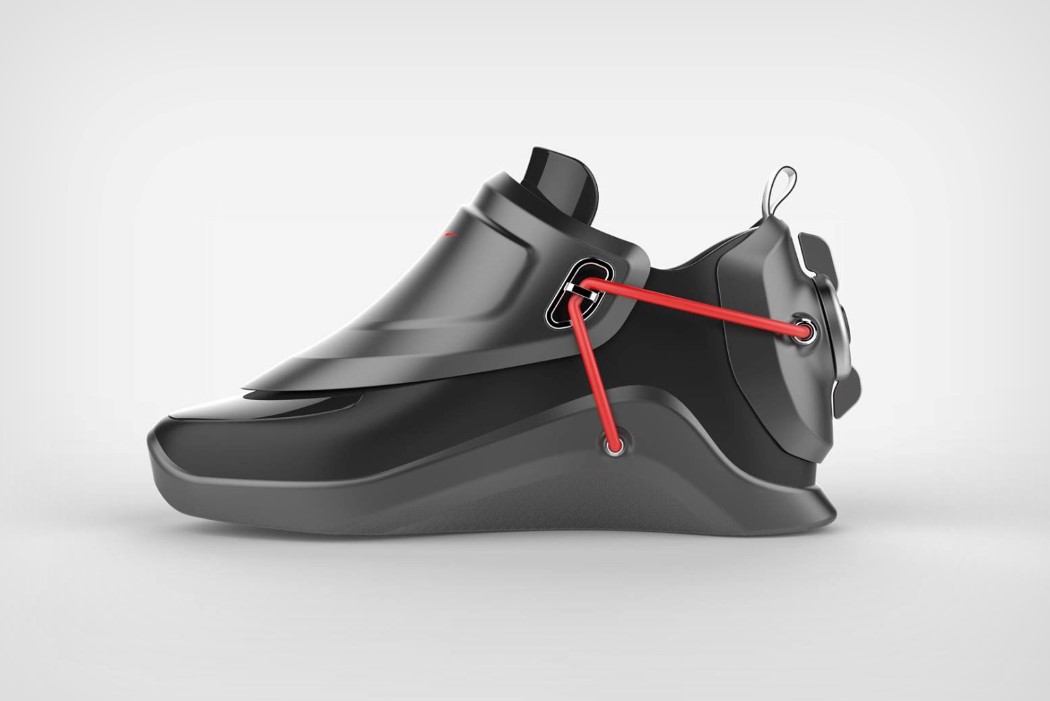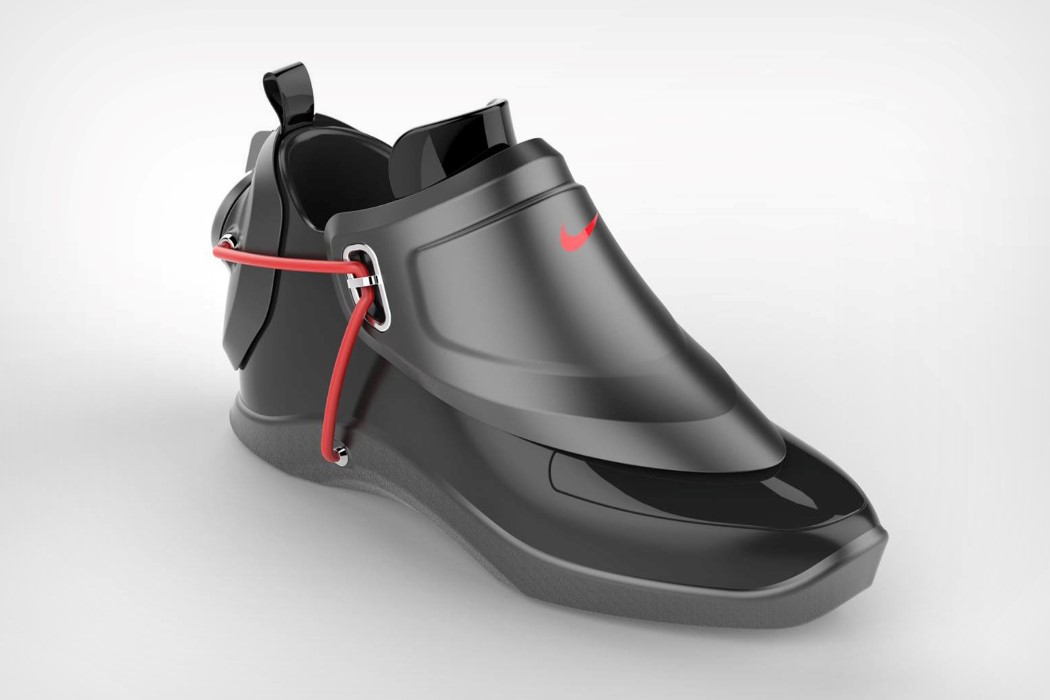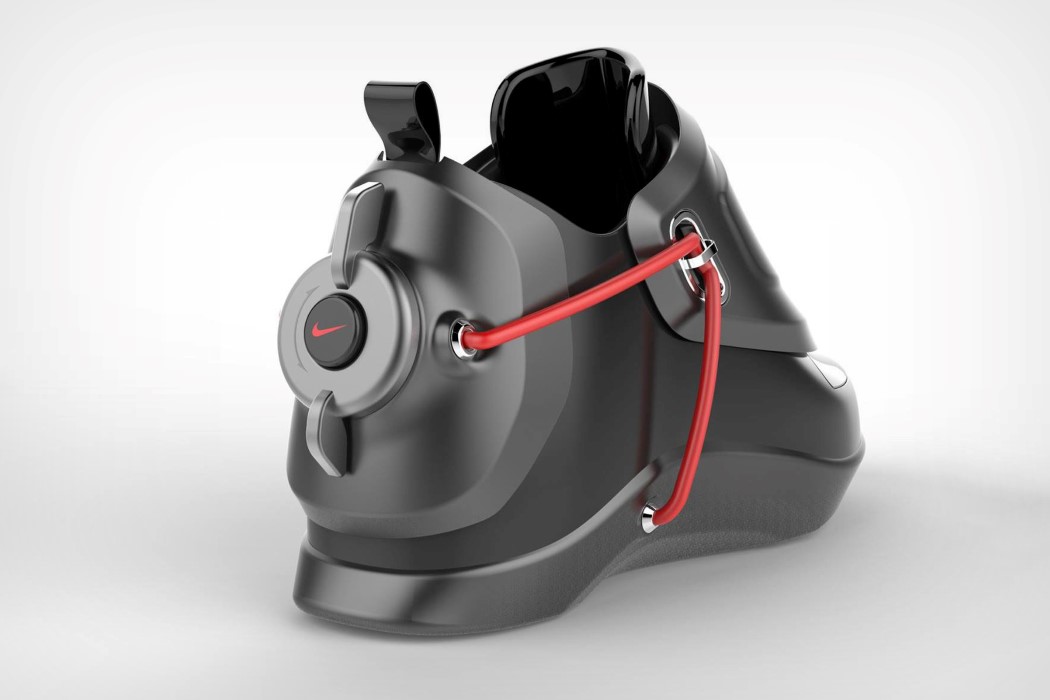Designed to look like the spiritual lovechild of the Nike Adapt self-lacing shoes and the Nike GO FlyEase hands-free shoe, this proof-of-concept footwear design from Jeff Shen hides a Nitinol (Nickel-Titanium Alloy) spring in its outsole. Known for its shape-memory properties, the spring can be made to expand and contract, allowing the footwear to open or close around your foot! No laces, no hands, no problems!
Unlike the Nike Adapt that comes with sensors, motors, and batteries, Shen’s shoes (titled ‘Heaven’s Door’) use a much more ingenious low-tech system that doesn’t require all those bells and whistles. The shoe’s simple lacing/unlacing mechanism relies on a wireless charging mat that helps heat the Nitinol spring, causing it to expand and the shoe to open. Slip your foot in and step off the mat and the Nitinol spring begins cooling and returning to its original shape, causing the shoe to constrict securely around your ankle.
Designer: Jeff Shen

The Heaven’s Door has a unique design style that combines the close-toe design of a shoe with the open-ish ankle aesthetic of a slip-on sandal. The shoes have a leather body, punctuated by an elastic strap that runs along the side, connecting the rear flap to the main shoe. A rubber outsole hints at comfortable outdoor use in an urban environment, while hiding the springs away in a recessed channel running along the length of the shoe. Although remarkable in their automatic opening/closing abilities, the shoes don’t try to look futuristic – because they are not. Unlike the Nike Adapt that have an undeniable sci-fi backstory, the Heaven’s Door is simply a footwear concept with a clever idea driven by material science. It’s a seemingly normal-looking shoe with an incredible trick up its sleeve… or down its outsole.

For Shen, the shoe’s design required a lot of trial, error, and prototyping (you can read his entire case study on his portfolio website). Shen played with straight and coiled Nitinol elements, toyed with the sole’s design, the opening and closing mechanism, and even experimented with finding the right place to add the elastic band to prevent the shoe’s rear flap from deforming.
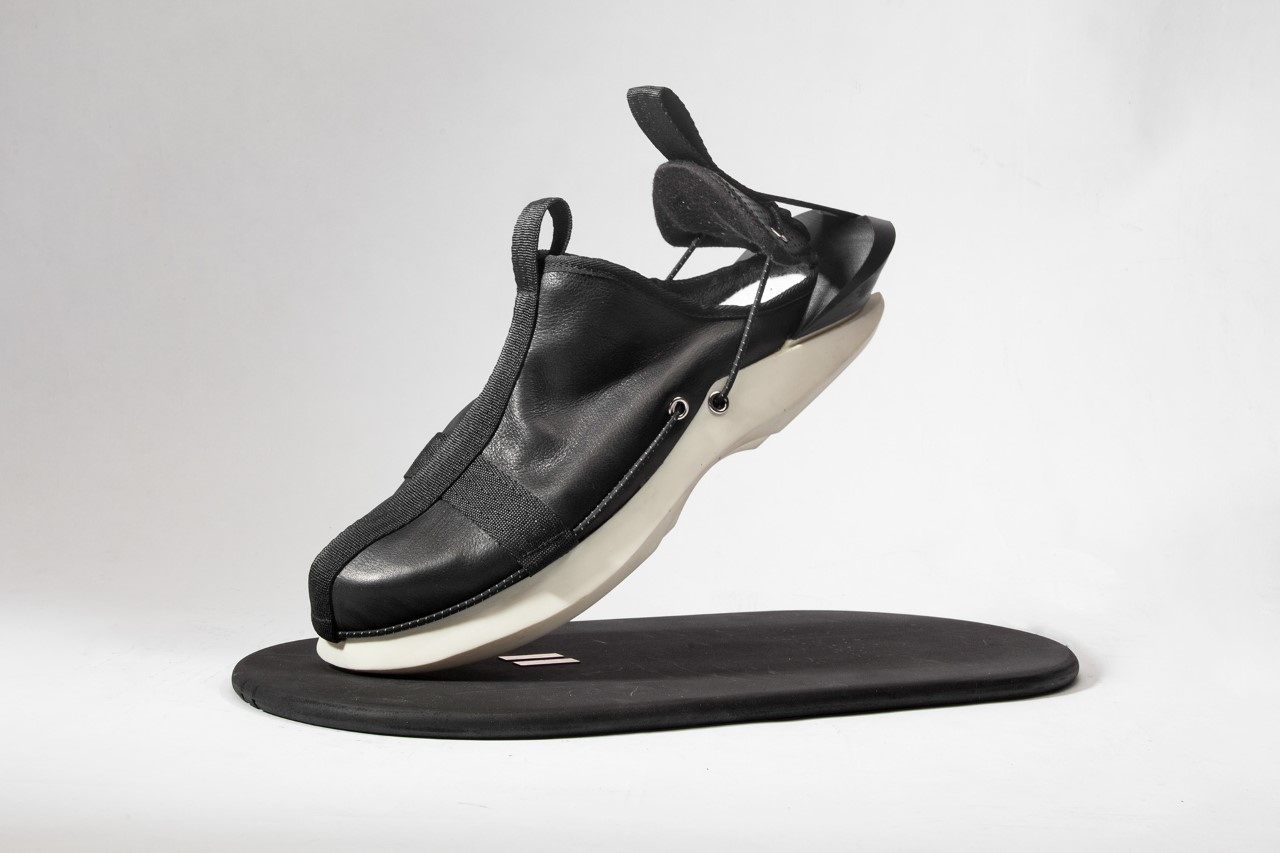
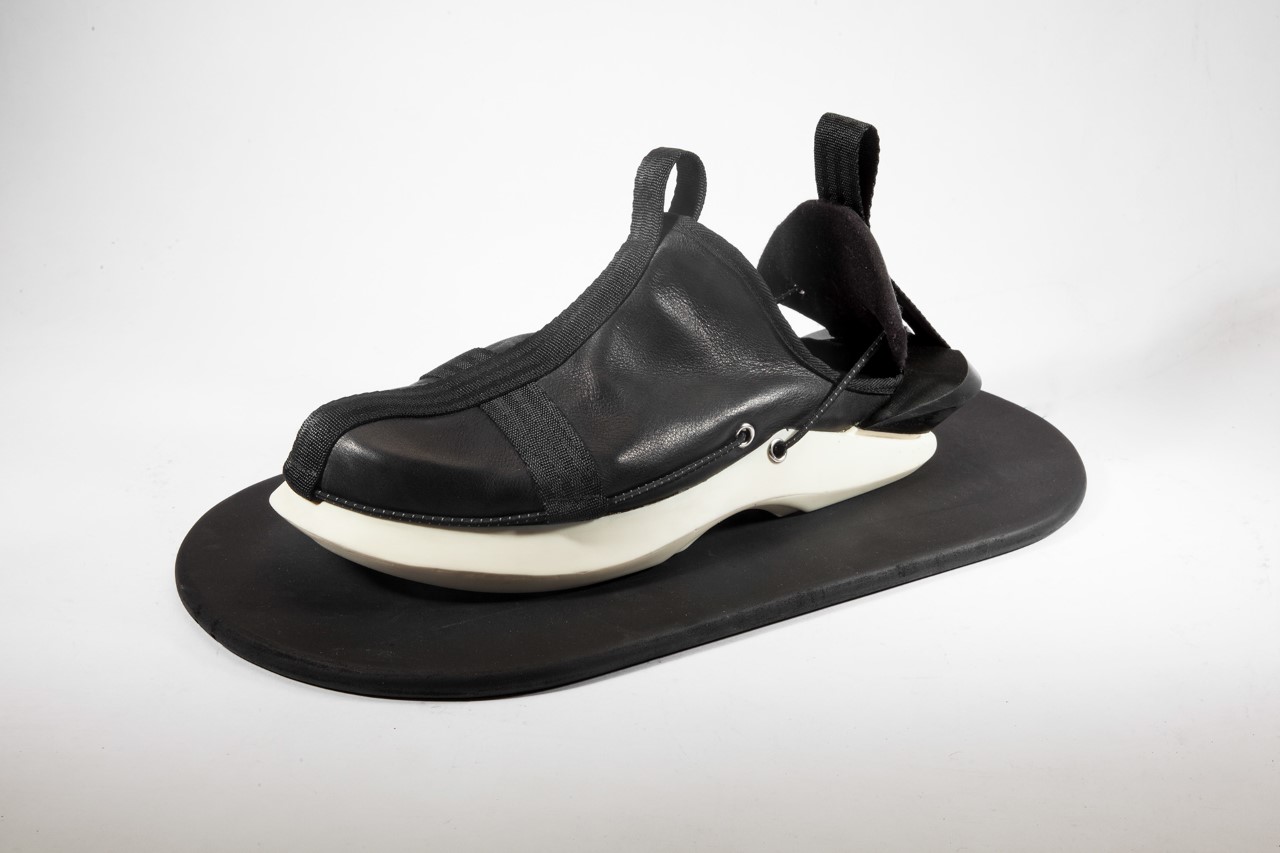
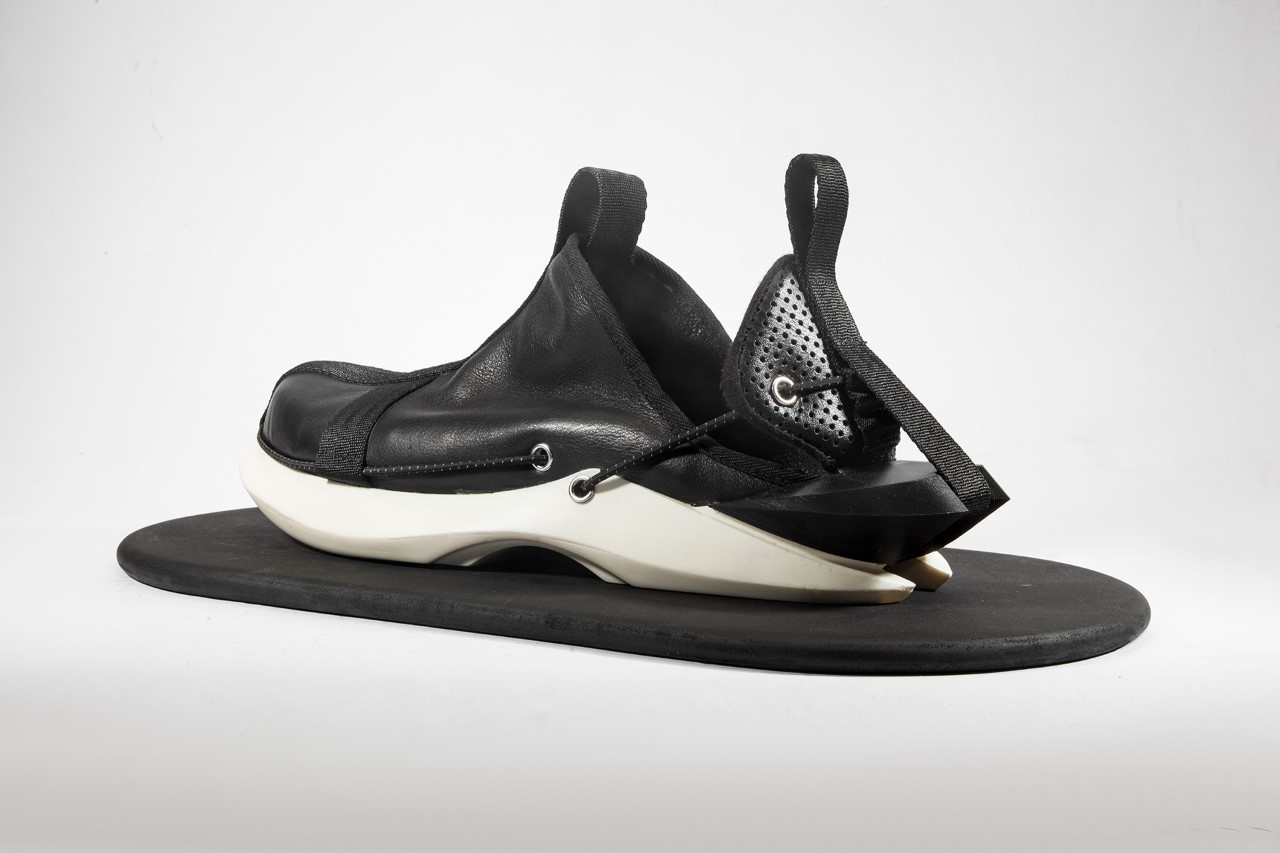
At the footwear’s heart is its simple low-tech opening and closing mechanism that relies on a wireless charging mat (keeping any and all tech out of the shoe itself to ensure a longer lifespan and the ability to be entirely resistant to water). The mat connects to a coil hidden in the shoe’s outsole, which then heats up to 70°C, causing the Nitinol spring to loosen and a set of expansion springs under the heel to pull on it, releasing the shoe’s rear flap backward almost like a drawbridge. This only lasts as long as the shoe is on the wireless mat. Step off it and the Nitinol cools back and begins assuming its original shape, pulling the rear flap shut.
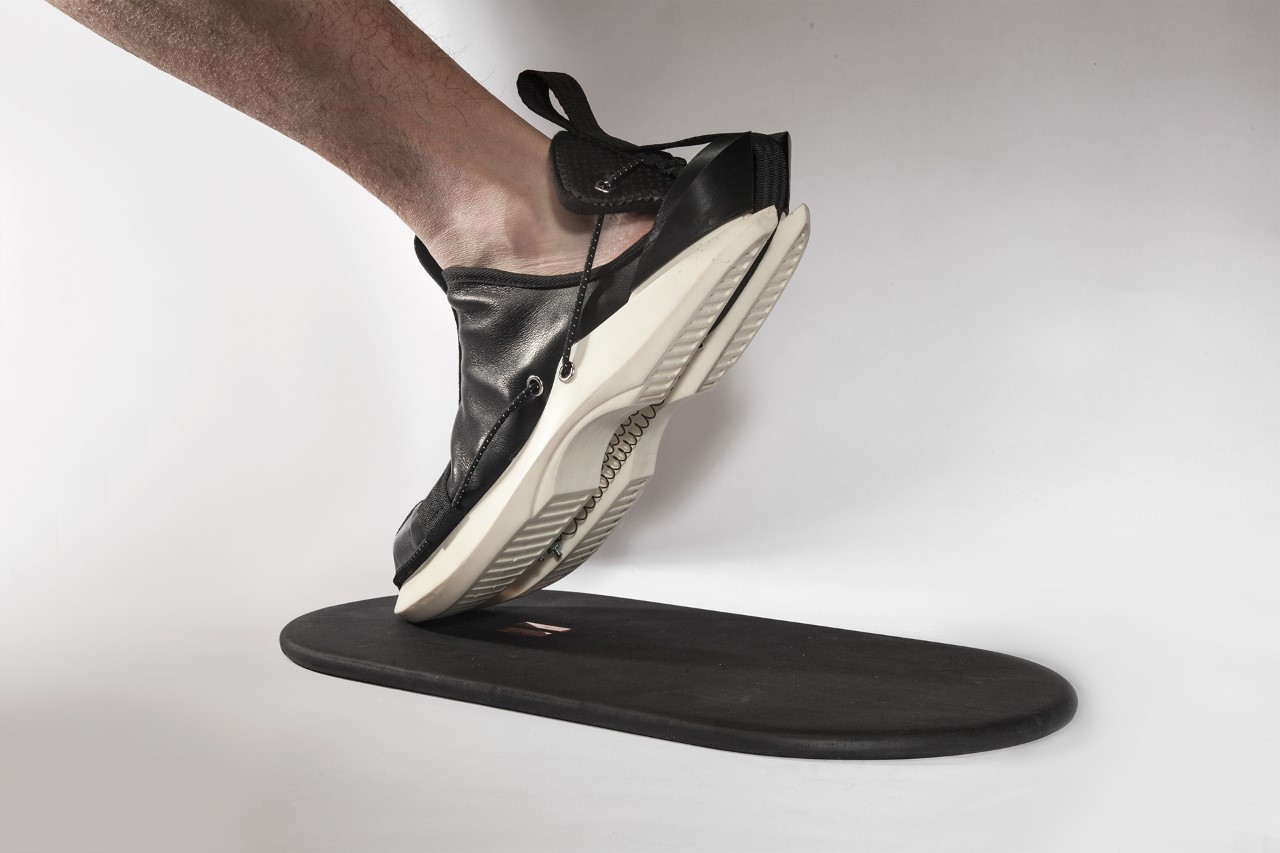
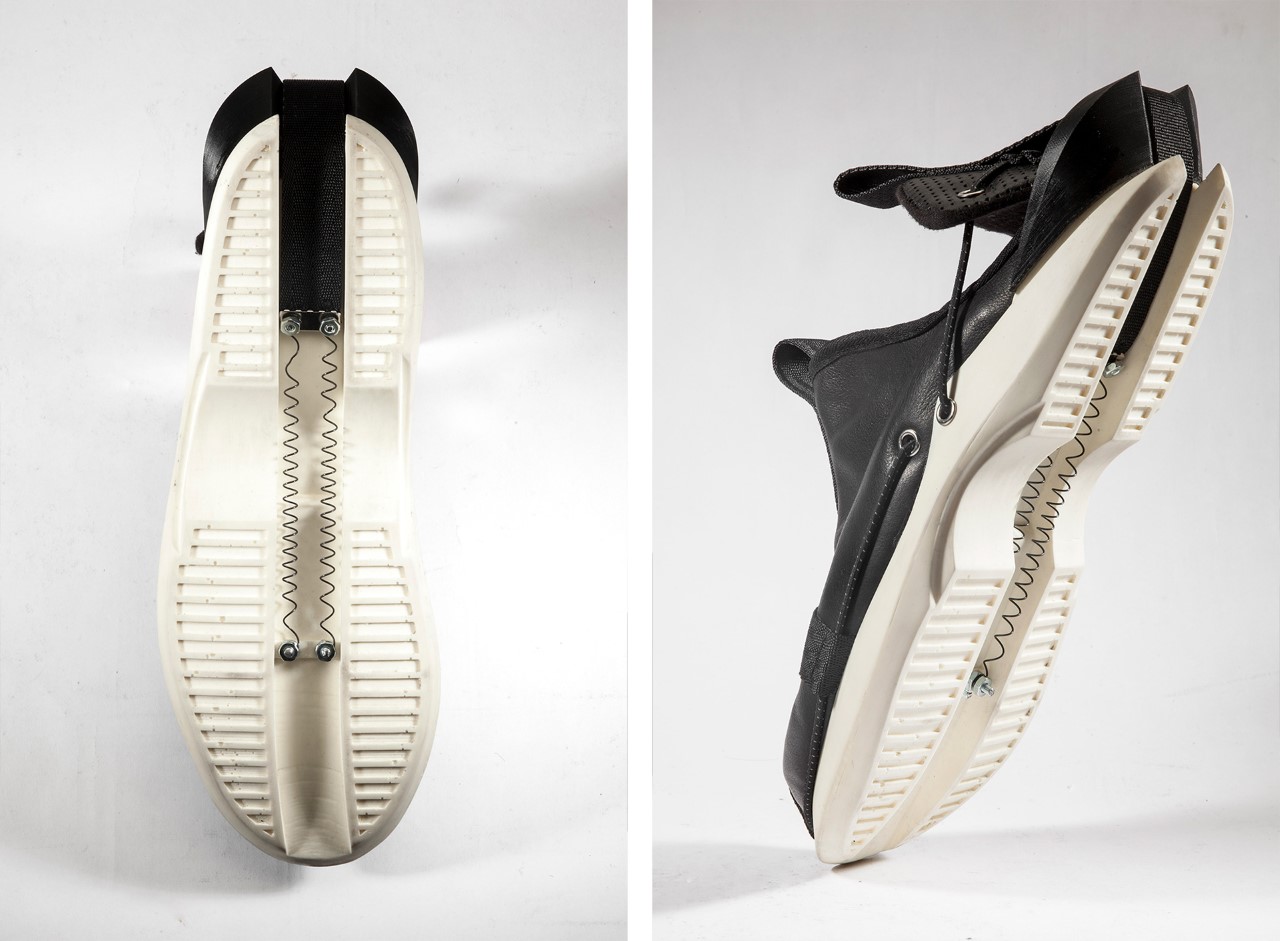
What the Heaven’s Door shoe does is cleverly eliminate any need for tech components to be present in the shoe. This helps bring down the footwear’s price while still giving it its signature feature. It also means no chances of planned obsolescence, or parts accidentally failing. Even if things DO fail, the shoes can still be worn and removed manually, using the pull tab at the back of the footwear.
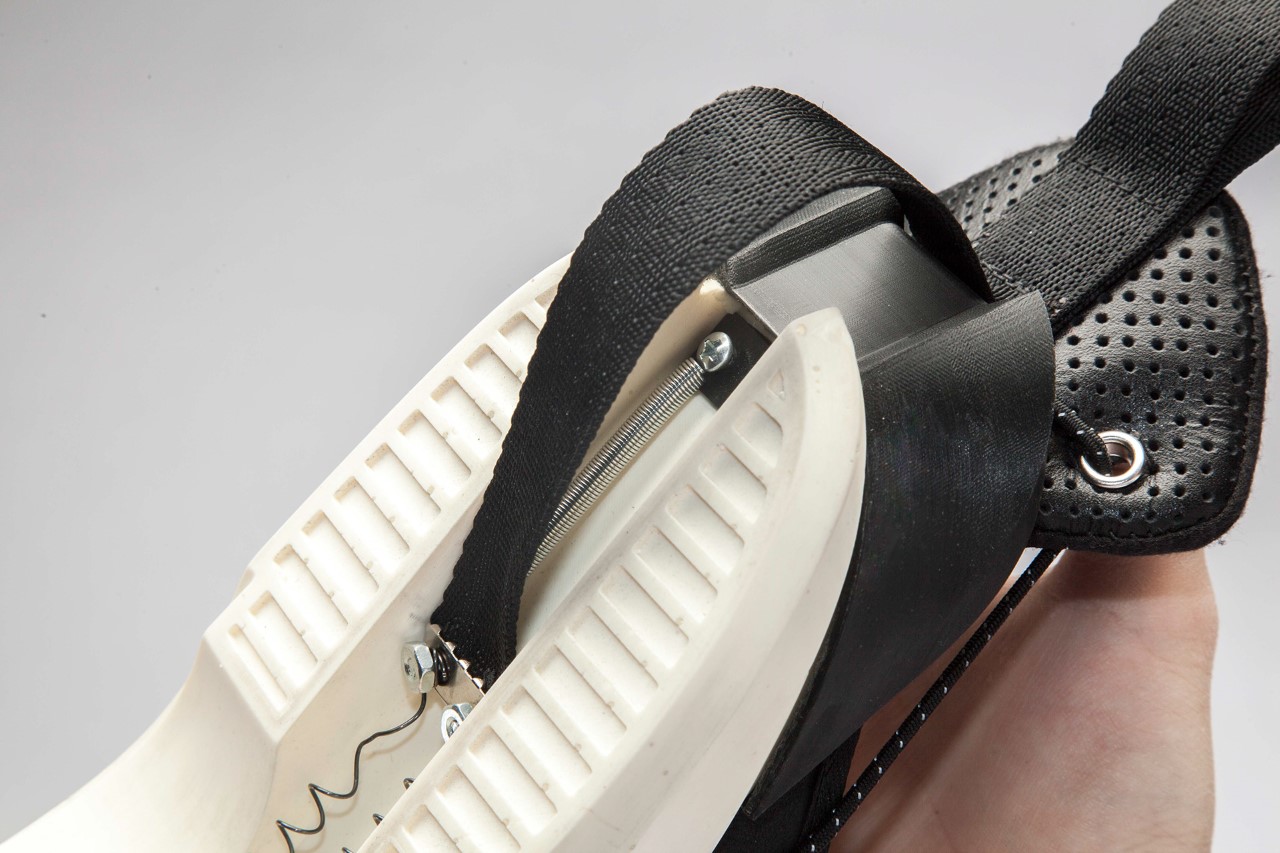
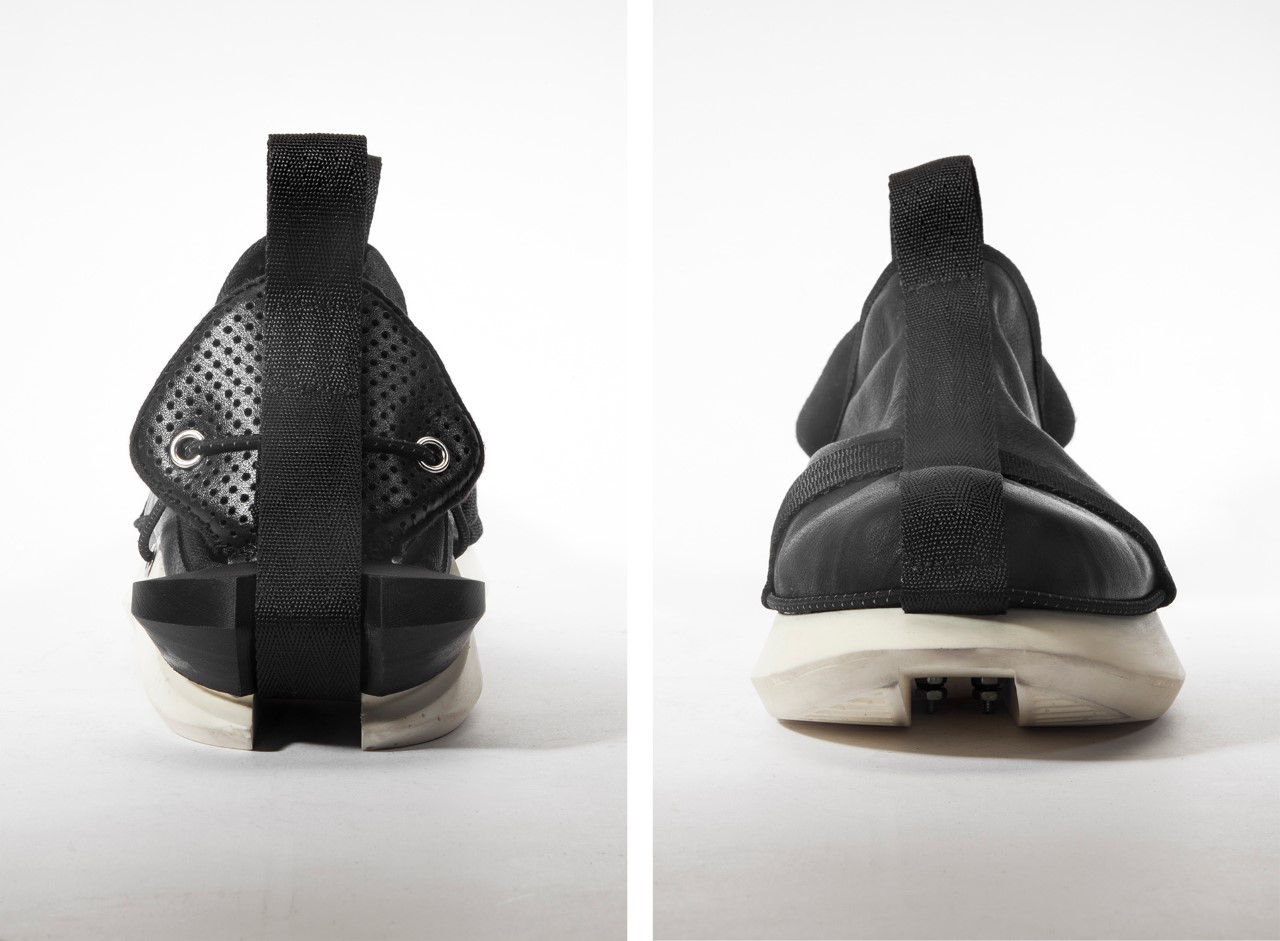
Ultimately, the shoe aims at appealing to everyone thanks to its clever, universal design… but just like with Nike’s GO FlyEase hands-free footwear, Shen designed his concept keeping the disabled in mind. Shen used the term “Enclothed Cognition” to describe most disability-focused fashion found in today’s world. “It refers to the systematic influence that clothes have on the wearer’s psychological processes”, Shen explained. “Not being able to put on shoes by oneself and constantly realizing the fact that they dress in a disabled look is devastating on the user experience and self-esteem.”
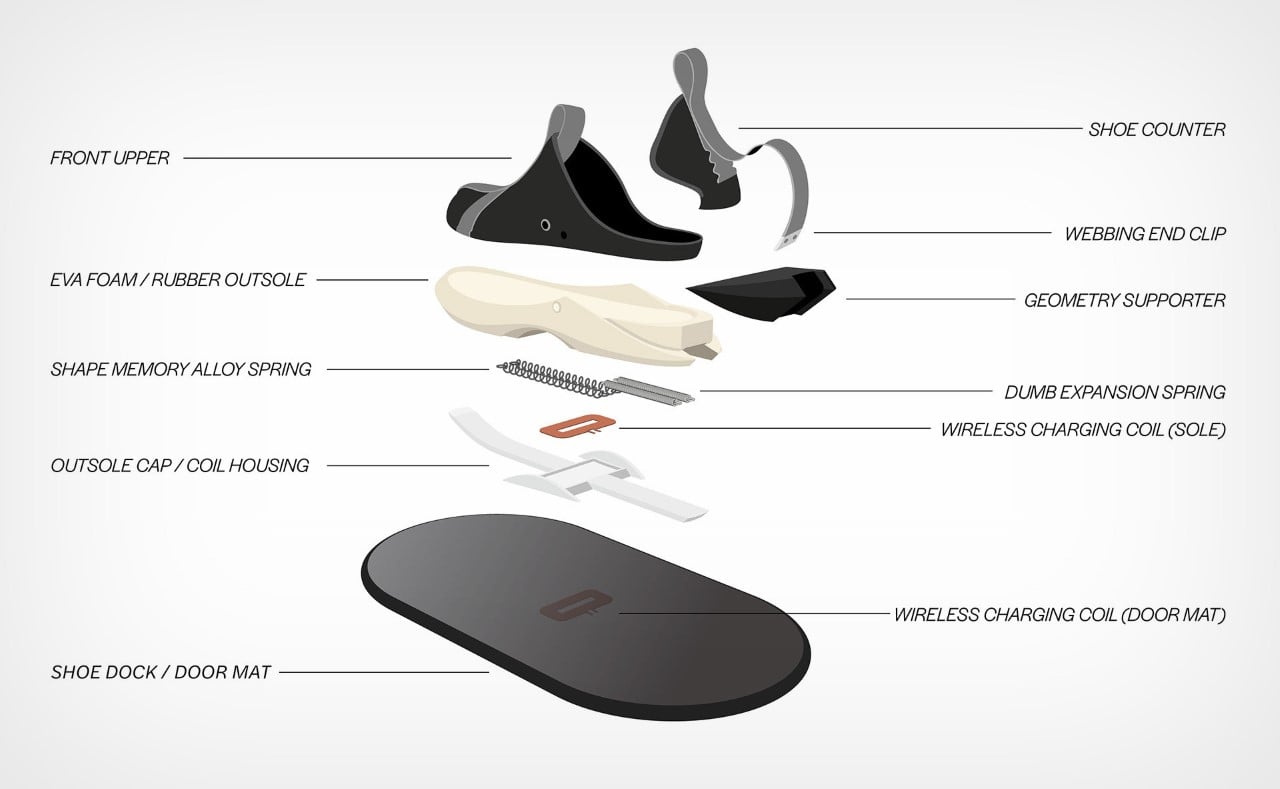
Aside from being a clever, accessible, truly hands-free, and low-tech self-wearing shoe, the Heaven’s Door footwear concept also destroys the notion that disabled fashion should look any different from regular fashion. The self-wearing shoes have a uniquely contemporary style that appeals to a broader populace. Or should I say popu-laceless!?

The post Self-wearing shoe concept automatically opens and closes thanks to a clever low-tech shape memory alloy spring first appeared on Yanko Design.
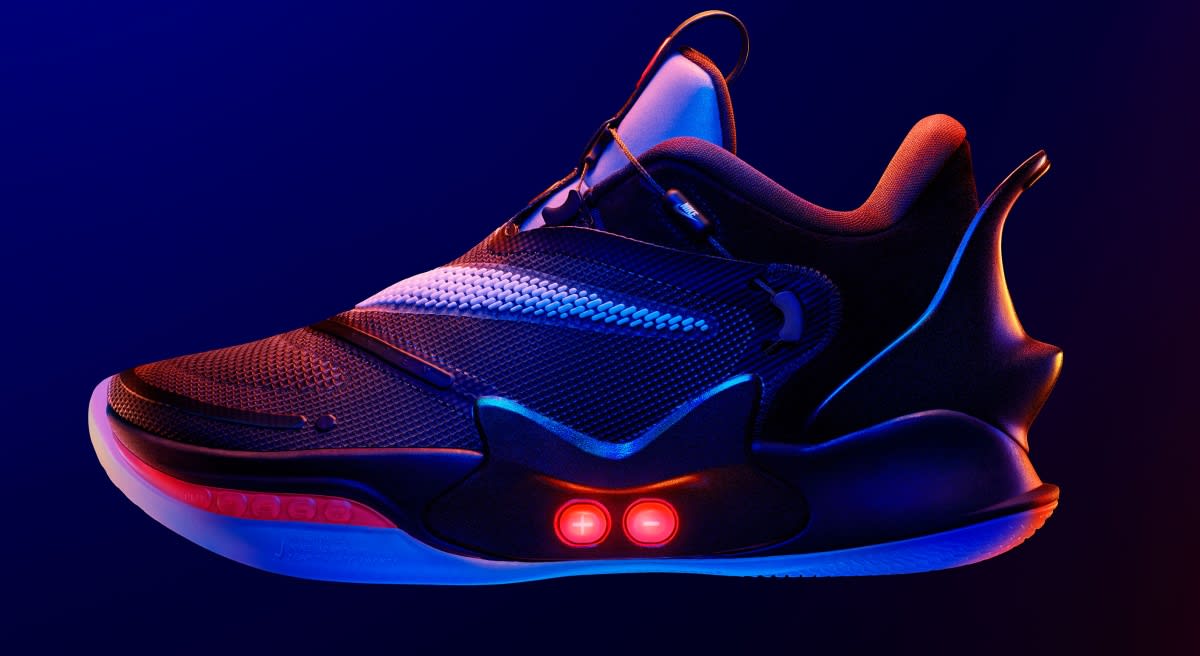 Last year Nike applied self-tightening / self-lacing tech to a basketball shoe for the first time with its Adapt BB. Now the Adapt BB 2.0 is ready to go on sale this Sunday as the NBA celebrates All-Star Weekend. The shoes have already been worn in-g...
Last year Nike applied self-tightening / self-lacing tech to a basketball shoe for the first time with its Adapt BB. Now the Adapt BB 2.0 is ready to go on sale this Sunday as the NBA celebrates All-Star Weekend. The shoes have already been worn in-g...
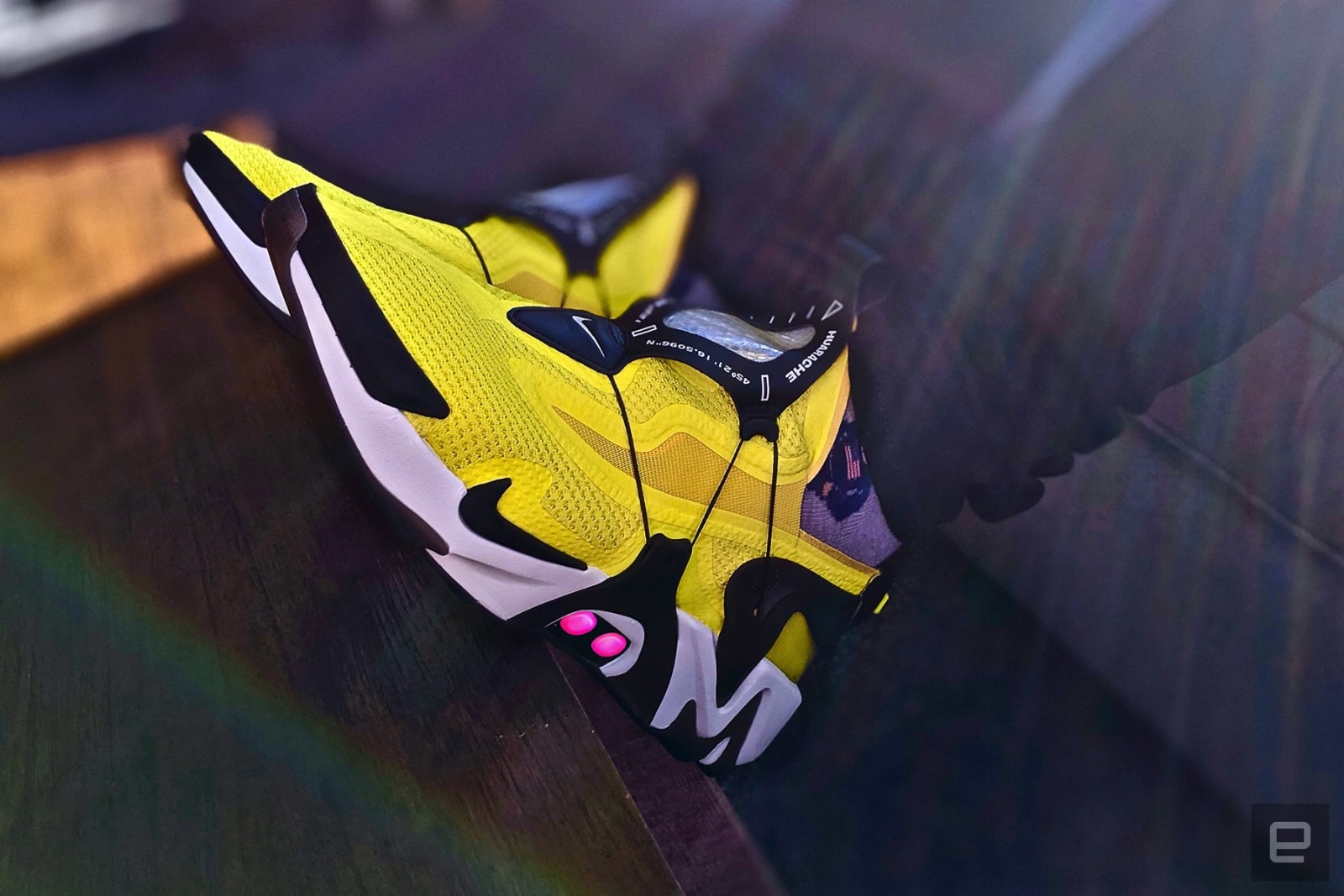 This probably isn't shocking to anyone who knows me, but I love sneakers perhaps too much for my own good. So, when Nike introduced the Adapt BB with power laces earlier this year, I was pretty intrigued: it brought two of my favorite worlds together...
This probably isn't shocking to anyone who knows me, but I love sneakers perhaps too much for my own good. So, when Nike introduced the Adapt BB with power laces earlier this year, I was pretty intrigued: it brought two of my favorite worlds together...
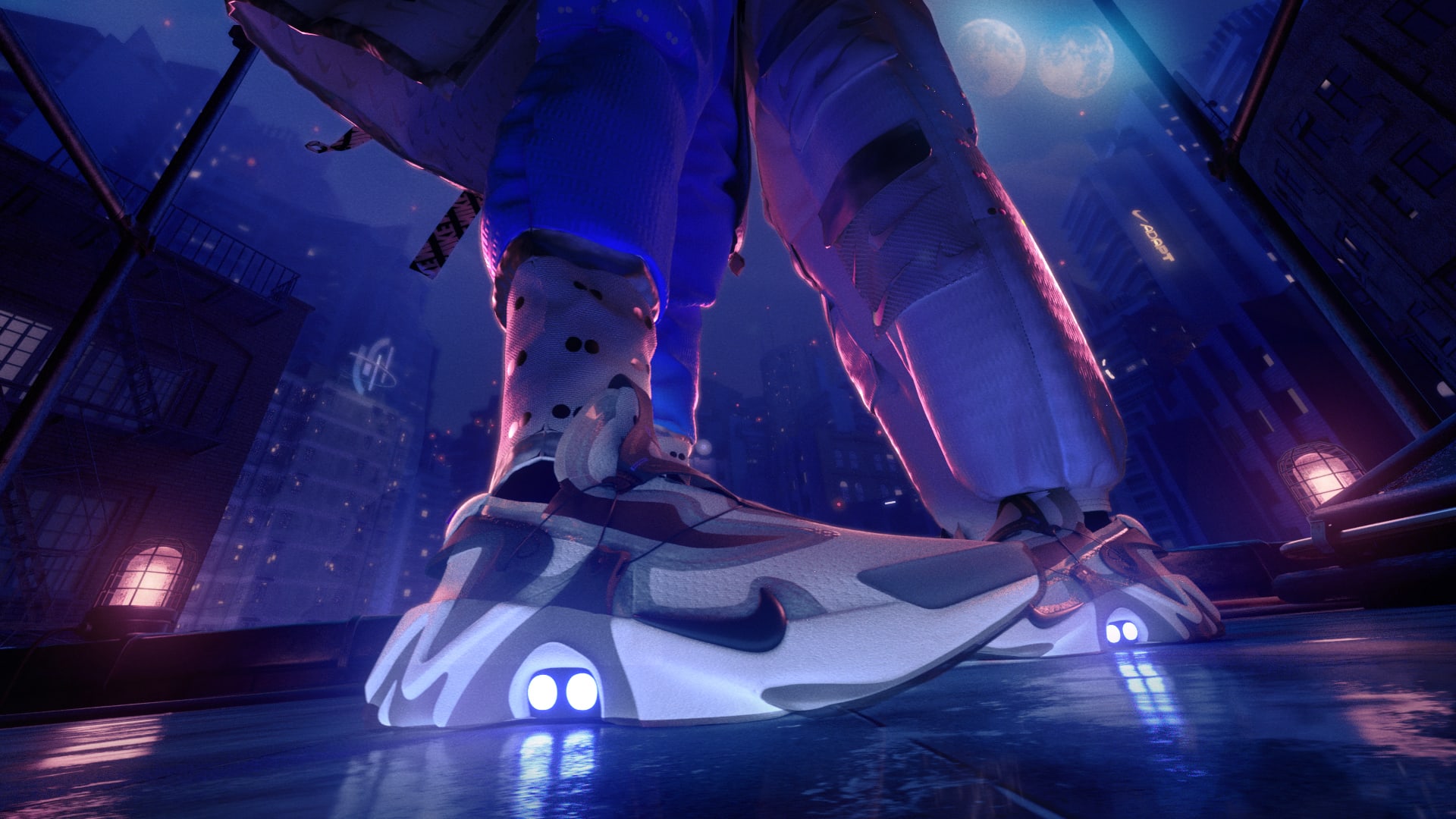 The late '80s and early '90s are fondly remembered by Nike fans. The Air Max 1 and Air Max 90 redefined sneaker designs with their "visible air" heel units. The Air Huarache crossed over from runners to fashion-conscious city-dwellers thanks to its u...
The late '80s and early '90s are fondly remembered by Nike fans. The Air Max 1 and Air Max 90 redefined sneaker designs with their "visible air" heel units. The Air Huarache crossed over from runners to fashion-conscious city-dwellers thanks to its u...
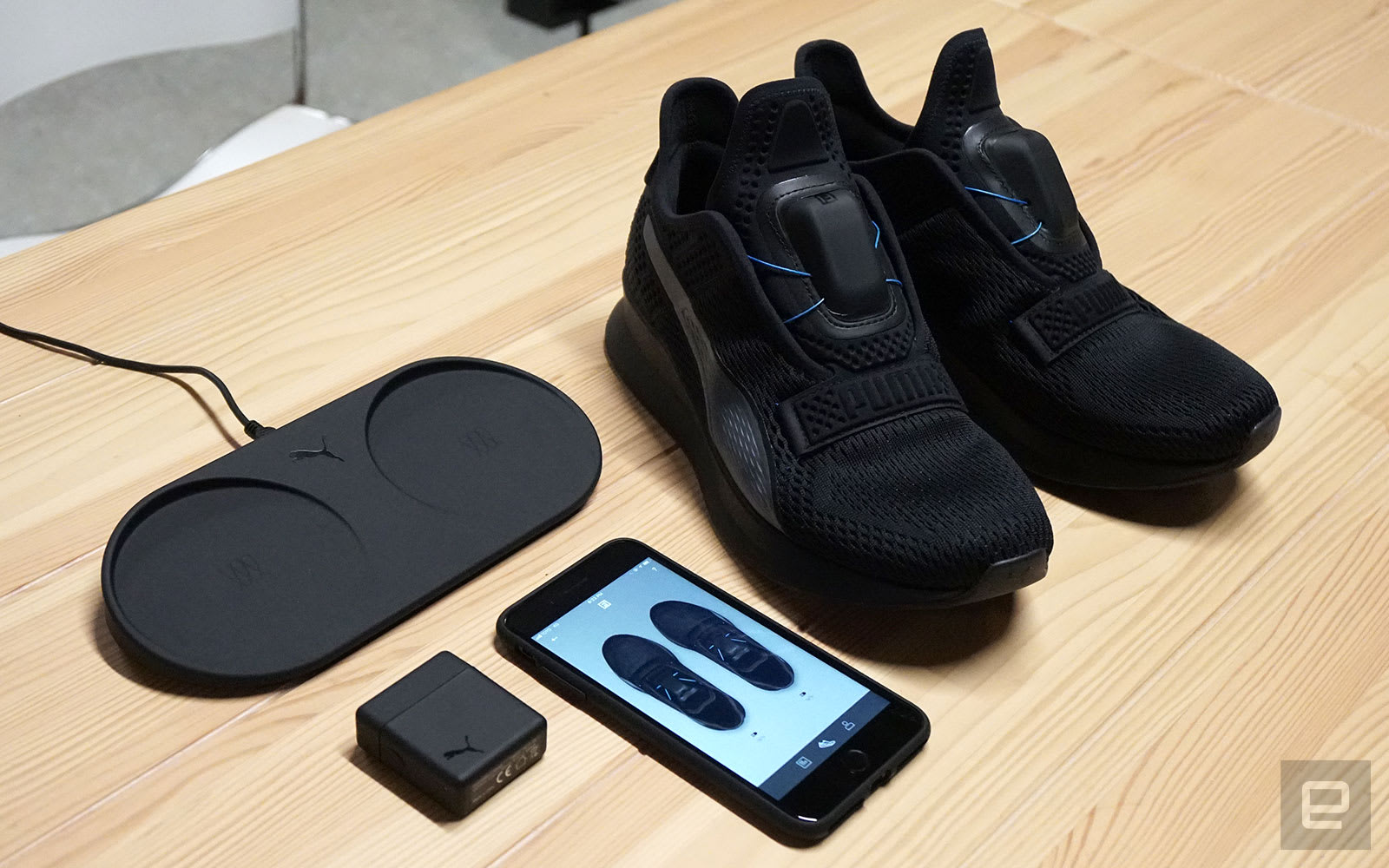 When Engadget took an exclusive look at the Puma Fi self-lacing shoes earlier this year, the company teased an upcoming beta program for those who want to try their luck. Well, the time has come. Between now and April 28th, you can apply for the Puma...
When Engadget took an exclusive look at the Puma Fi self-lacing shoes earlier this year, the company teased an upcoming beta program for those who want to try their luck. Well, the time has come. Between now and April 28th, you can apply for the Puma...
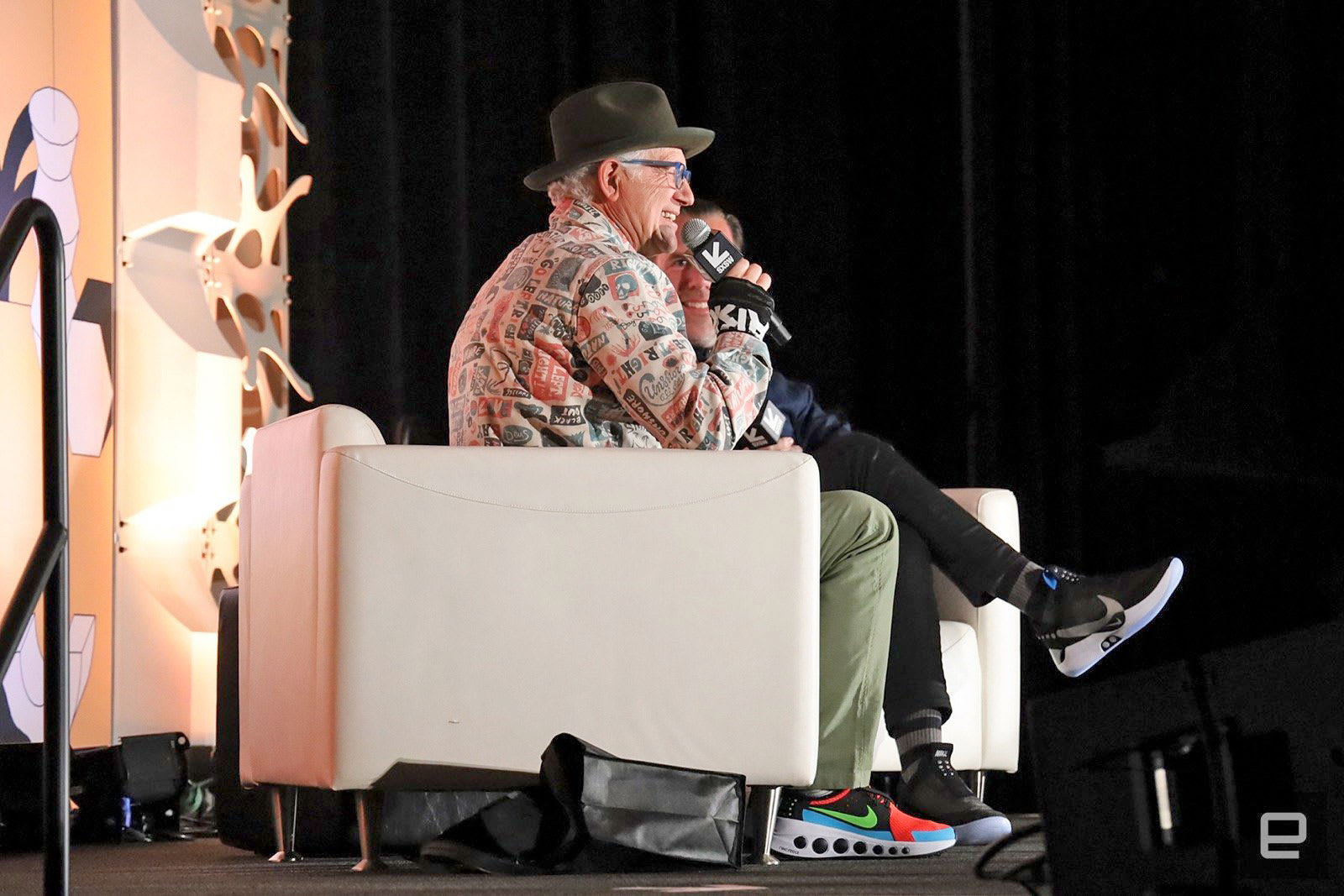 Tinker Hatfield made people jump off their seat at a SXSW 2019 panel. Literally. The legendary Nike designer, who's behind the Air Max and most iconic Air Jordans, took off the sneakers he wore to the stage and gave them away to one lucky person in t...
Tinker Hatfield made people jump off their seat at a SXSW 2019 panel. Literally. The legendary Nike designer, who's behind the Air Max and most iconic Air Jordans, took off the sneakers he wore to the stage and gave them away to one lucky person in t...
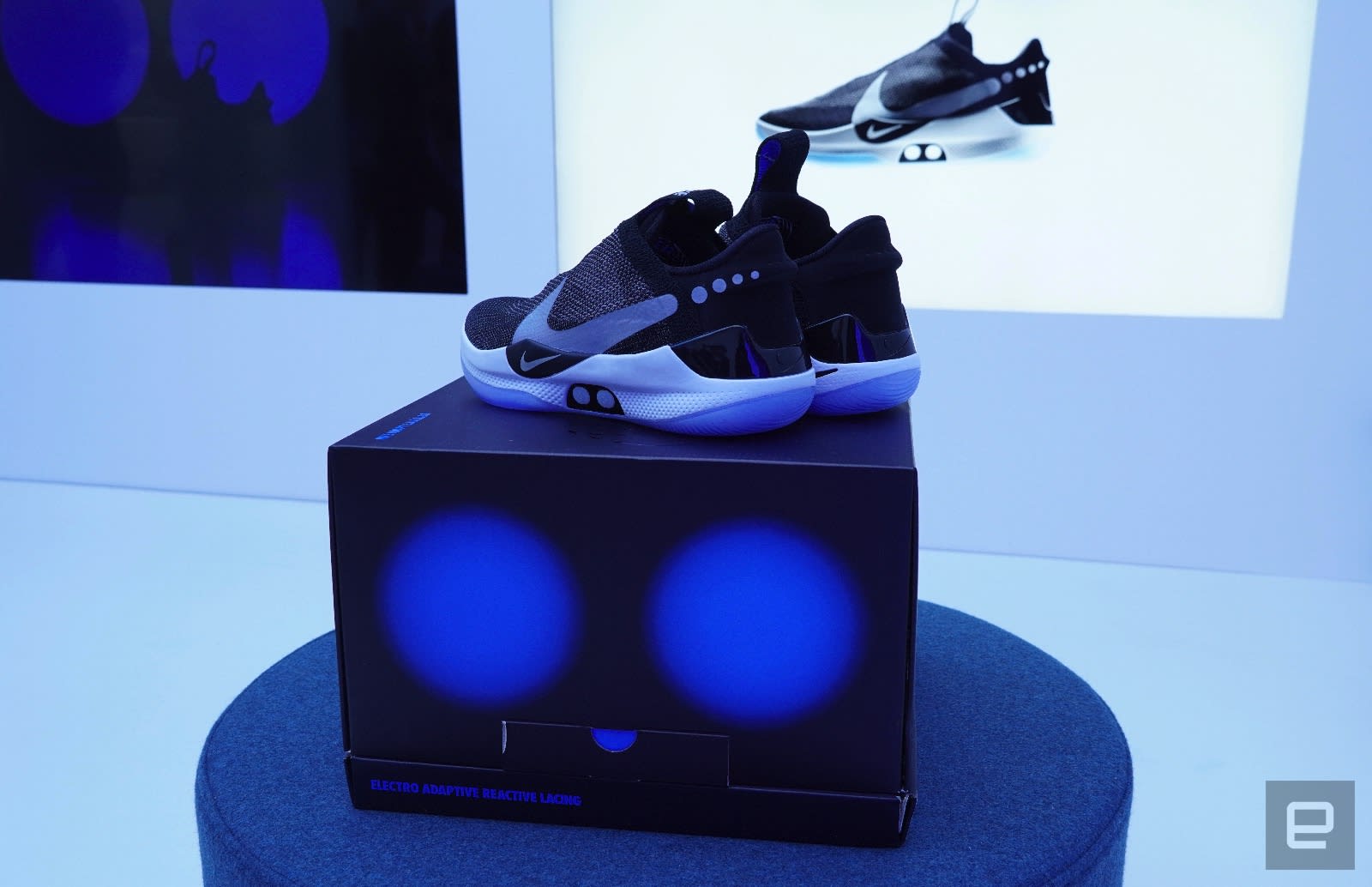 It was exactly a month ago that Nike took the wraps off of Adapt BB, its latest pair of shoes with power laces, and now the company is finally ready to bring them to the masses. The Adapt BB will launch globally on February 17th, although some lucky...
It was exactly a month ago that Nike took the wraps off of Adapt BB, its latest pair of shoes with power laces, and now the company is finally ready to bring them to the masses. The Adapt BB will launch globally on February 17th, although some lucky...
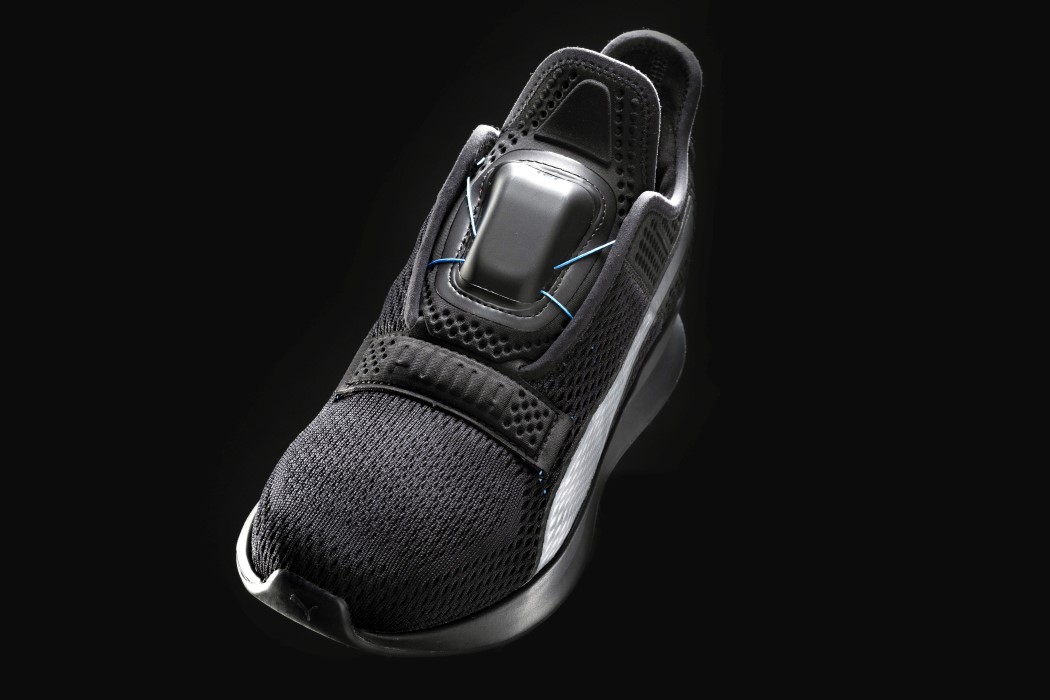
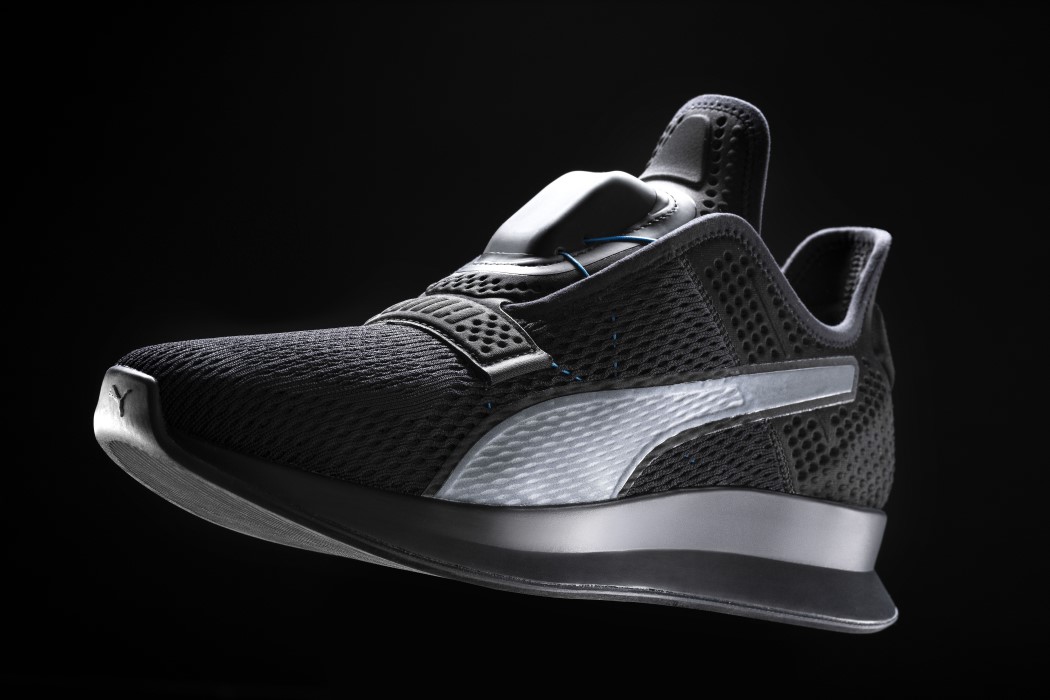
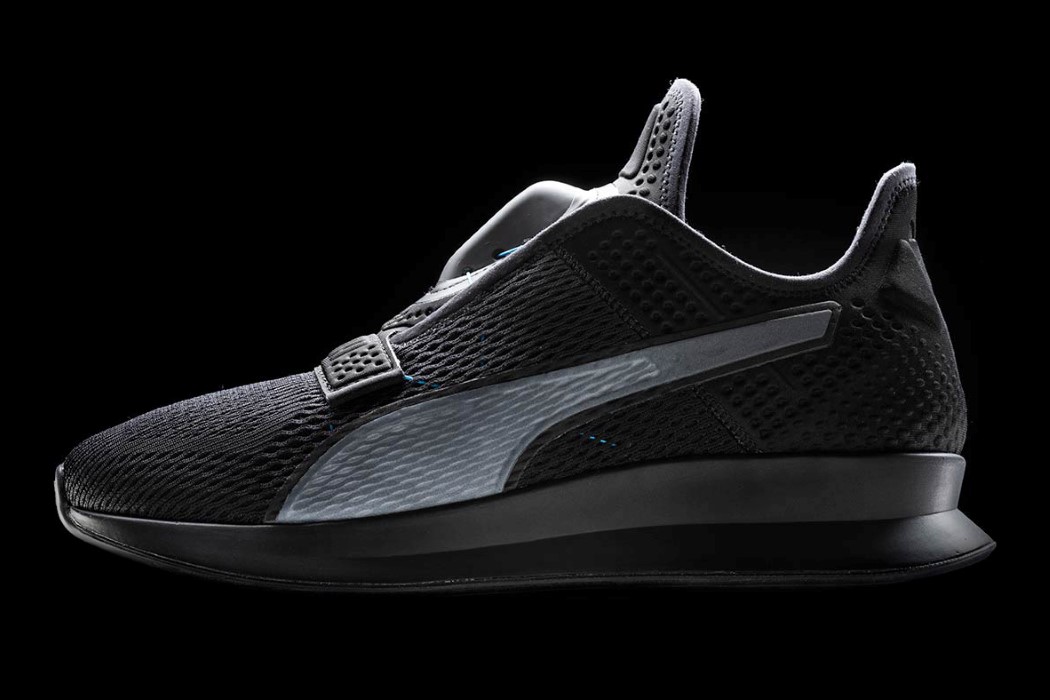
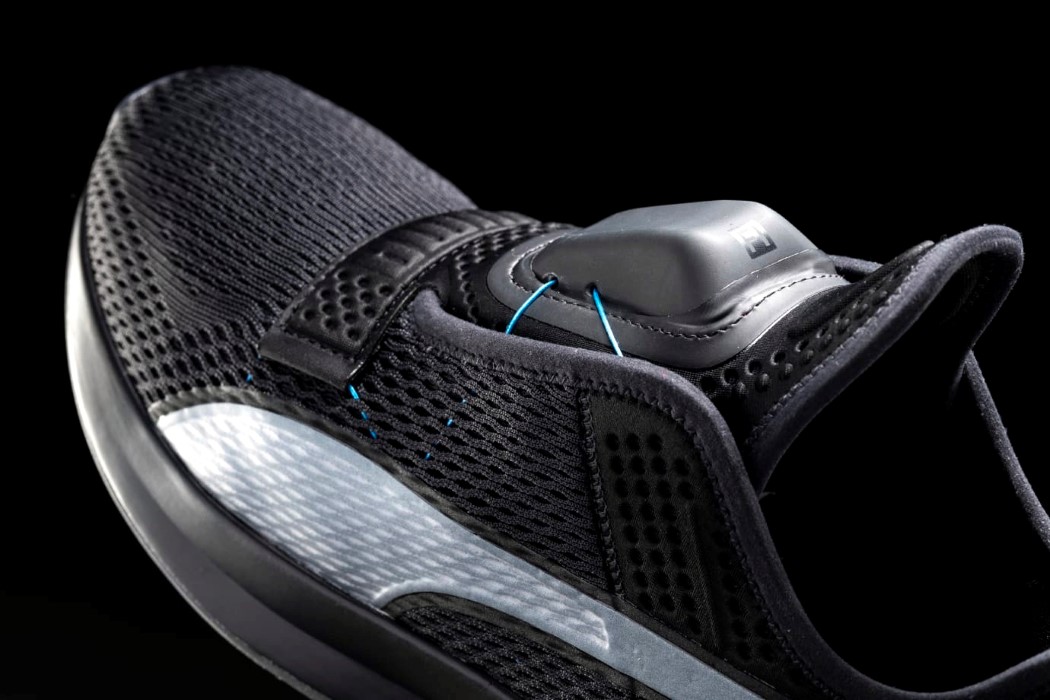
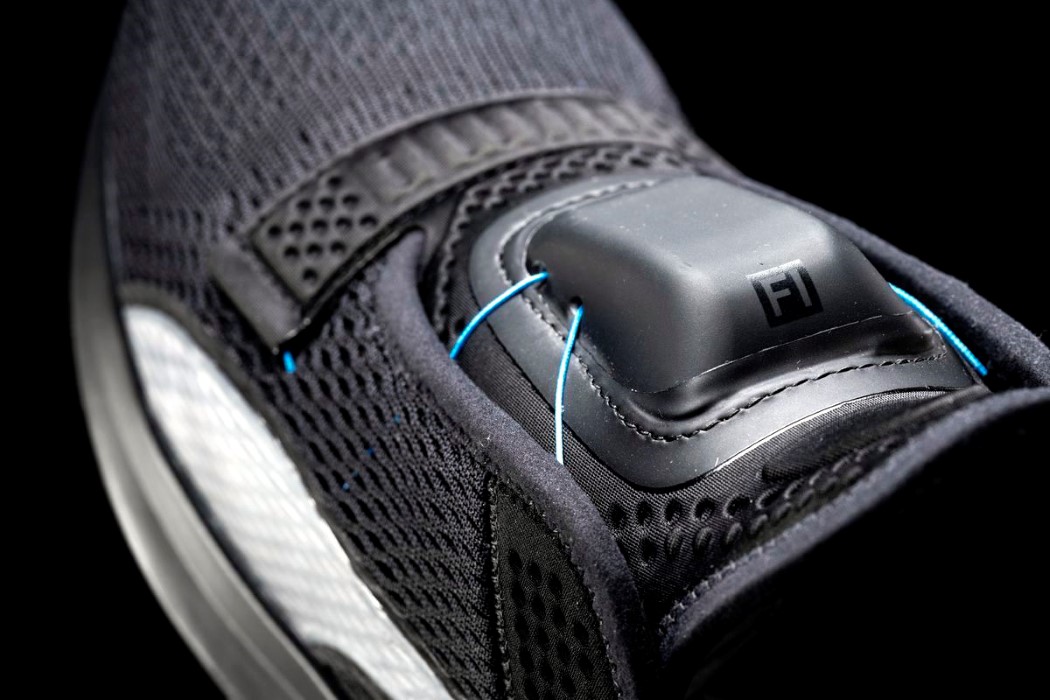
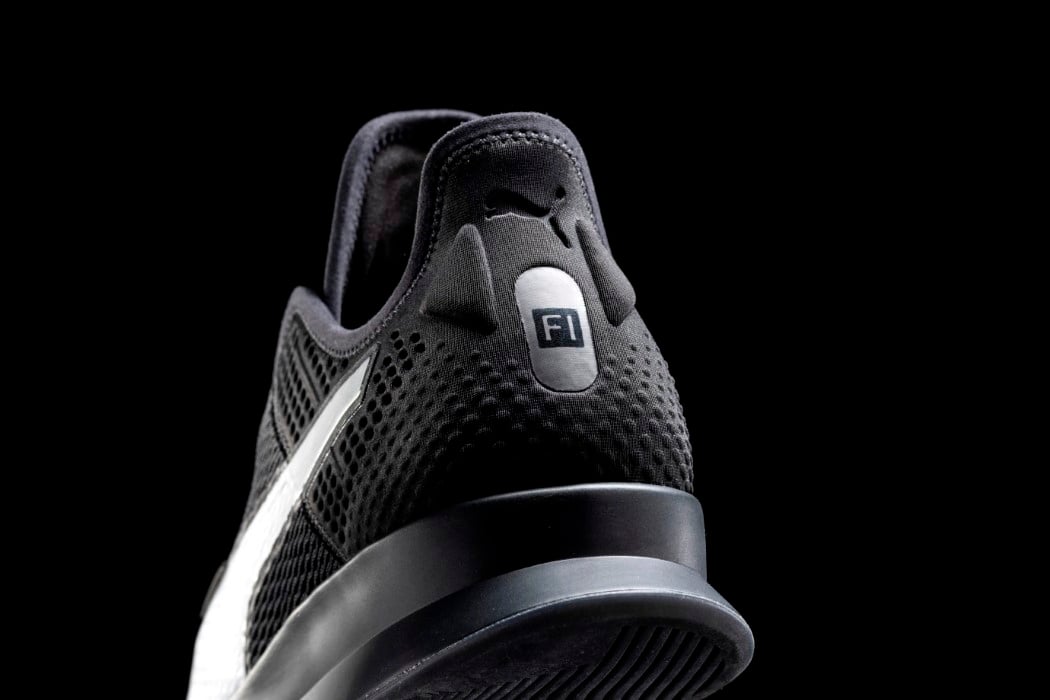
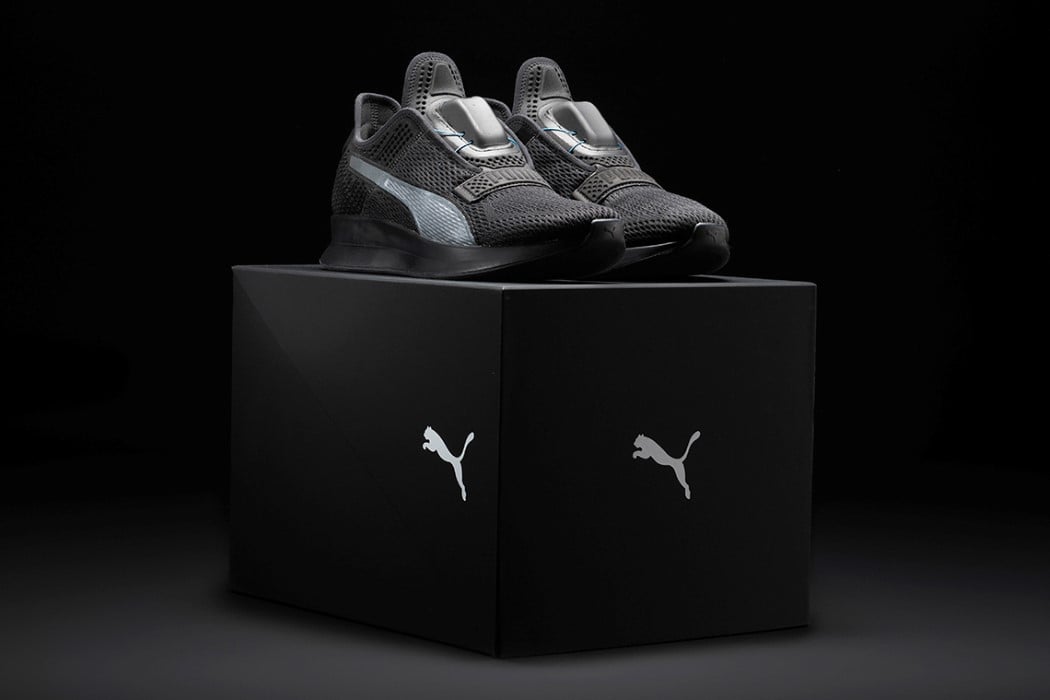
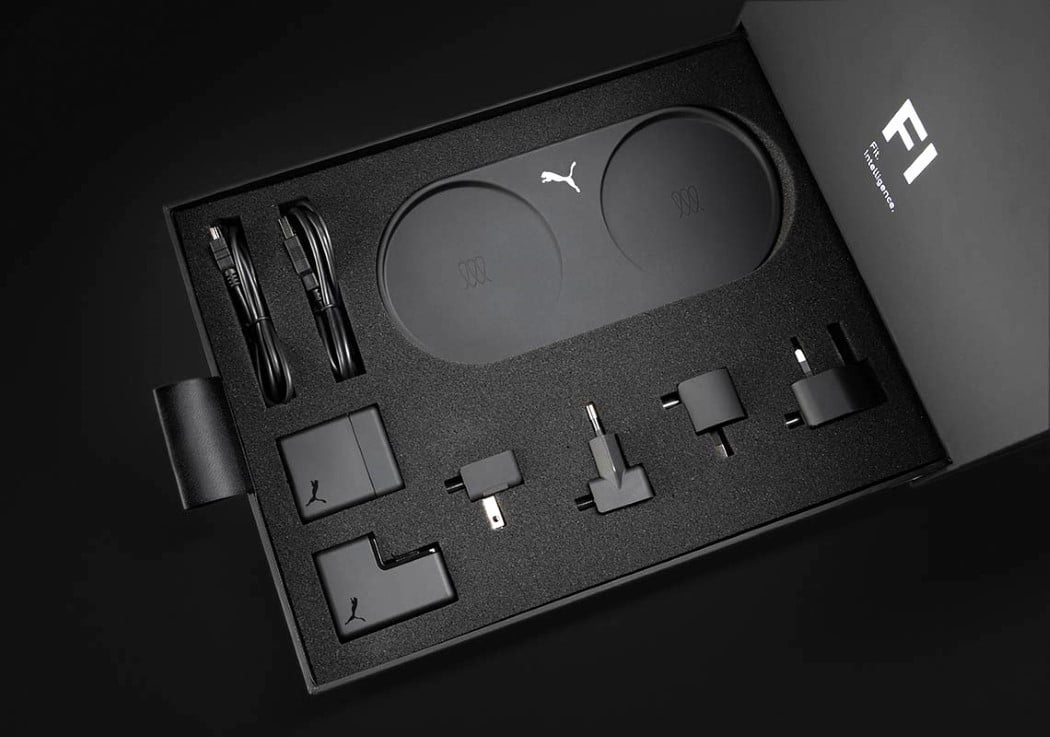

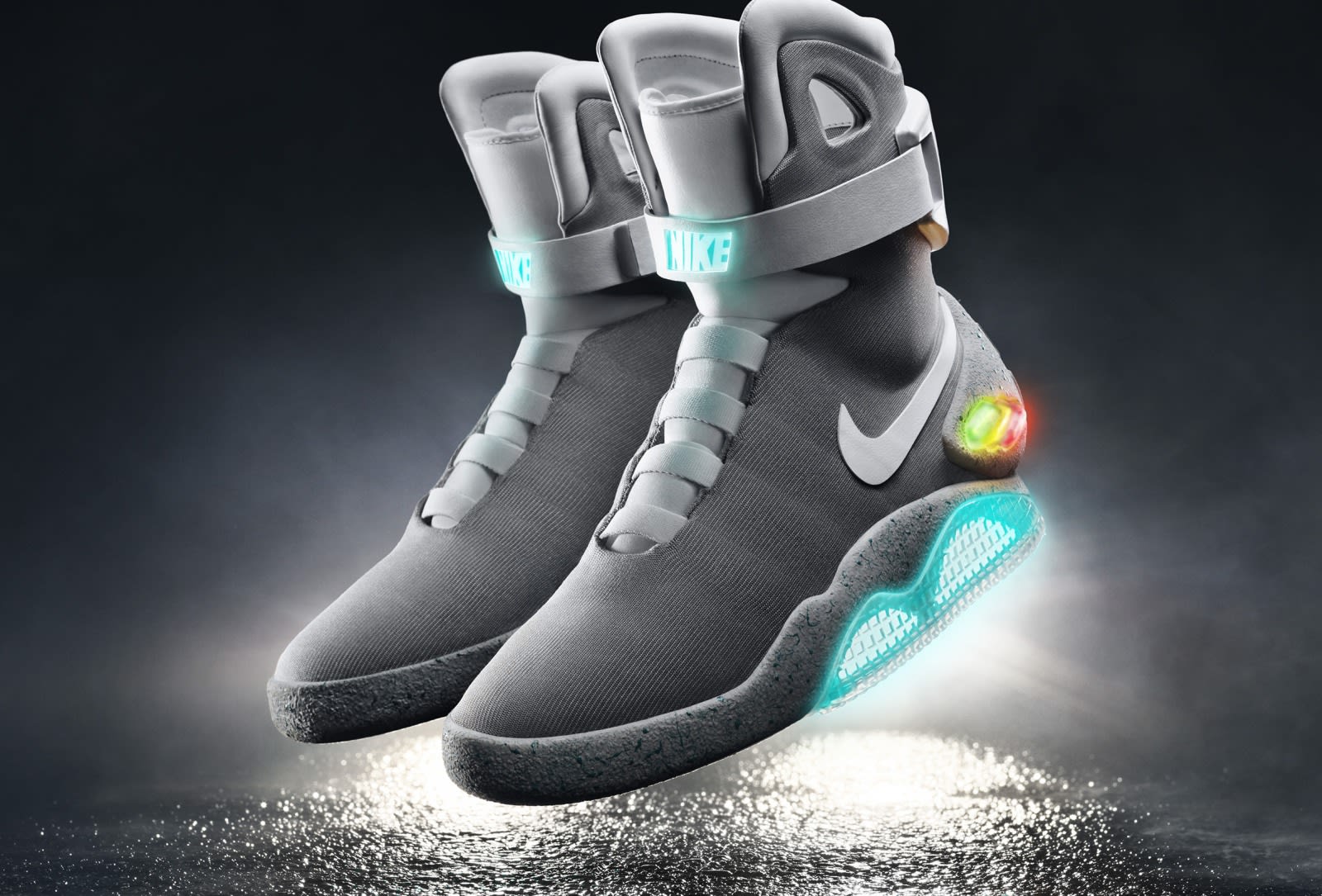 If you've always wanted to play basketball in a pair of self-lacing shoes like Marty McFly's Nike Mags, you will get your chance next year. On the company's quarterly earnings call executives revealed plans for an "Adaptive" performance basketball sh...
If you've always wanted to play basketball in a pair of self-lacing shoes like Marty McFly's Nike Mags, you will get your chance next year. On the company's quarterly earnings call executives revealed plans for an "Adaptive" performance basketball sh...
